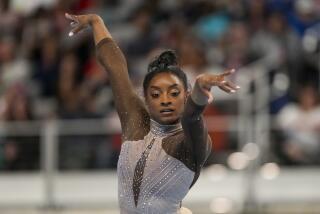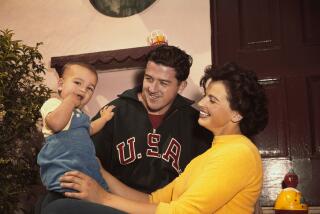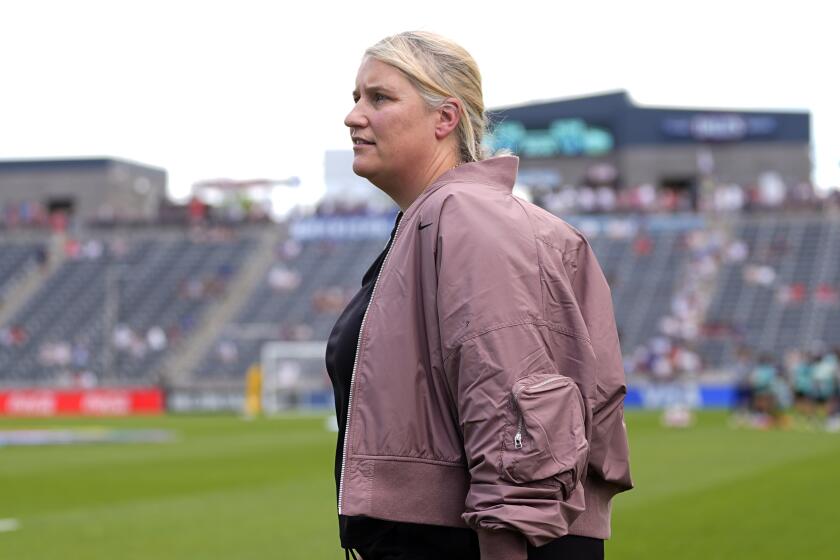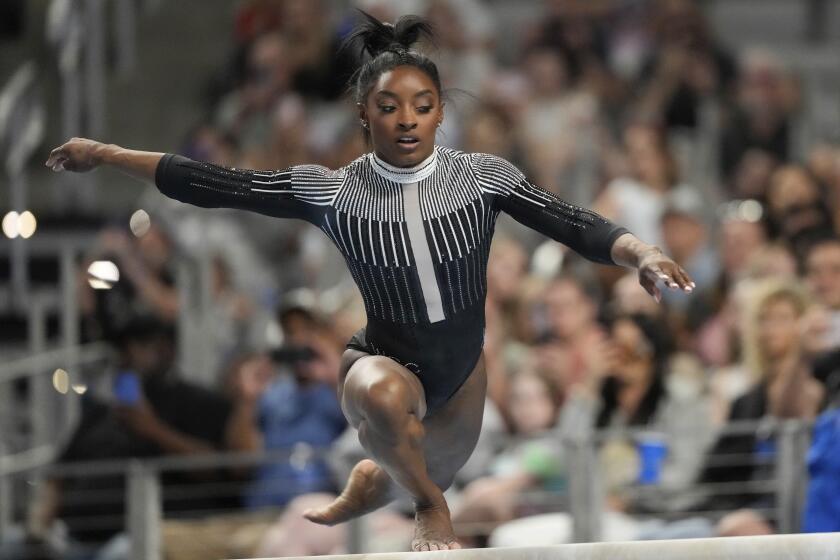AMERICA’S CUP ’92 : Bowsprit Protest Dismissed : Sailing: Jury rules that New Zealand setup complies with regulations.
New Zealand and Il Moro di Venezia will return to the water today after the Italians’ latest shots across the Kiwis’ controversial bowsprit fell short Monday.
The America’s Cup was an indoor sport for the day, with the challengers’ jury locked in an all-day hearing on the ongoing dispute, which on Saturday had cost New Zealand its fourth win.
That cut New Zealand’s lead in the best-of-nine challenger finals to 3-1, and Il Moro closed to 3-2 by winning Sunday. They’ll resume racing today, while Dennis Conner tries to continue his comeback with Stars & Stripes in the best-of-13 defender finals. America 3 leads 4-3, but Conner has won the last two races.
While Il Moro skipper Paul Cayard and New Zealand skipper Rod Davis met with the five-man jury at the Southwestern Yacht Club, then waited out the decision, the Kiwi crew was practicing modified maneuvers they hoped would meet with the approval of the jury, as well as their rivals.
After 10 hours, the jury dismissed Cayard’s further contention on racing Rule 64.4 (a) that New Zealand was in violation of the rules “every single day” because it was sheeting, or controlling the trim of, its gennaker headsail through an outrigger--i.e., the bowsprit.
The rope in question, the jury determined, “is not a sheet . . . (and therefore) Rule 64.4 was not infringed.”
New Zealand team manager Peter Blake said, “The decision completely vindicates the way we have sailed and highlights how inappropriate and ill-founded were Il Moro’s attacks on the integrity of the regatta juries and the sportsmanship of the New Zealand team.”
New Zealand’s come-from-behind victory over Il Moro by 2 minutes, 38 seconds Saturday was “annulled” by the jury because the Kiwis admittedly used the bowsprit illegally in another manner for eight seconds of the four-hour race. The jury didn’t award the race to Il Moro because, it said, the violation “had no significant effect on the outcome of the race.”
However, in an incident last January when Nippon beat Il Moro by 3:55 while flying a gennaker headsail illegally for the entire sixth leg, the jury noted Nippon’s violation but allowed it to keep the win because that, too, “had no effect on the outcome of the race.”
The jury, chaired by Graeme Owens of Australia, could expect to be questioned about that apparent inconsistency if it makes a rare appearance before the media, as scheduled, at 8 o’clock this morning.
That was New Zealand’s main quarrel with Sunday’s ruling.
“For one brief moment . . . our jibing technique infringed the interpretation of the bowsprit us . . . and we had our win taken away from us,” Blake said Monday. “We felt that penalty to be harsh.”
Team boss Sir Michael Fay said earlier, “We did inadvertently, for a matter of seconds, not have the brace (foreguy) bearing pressure.”
Designer Bruce Farr said, “Because the afterguy came unloaded even though the (spinnaker) pole was still in place, (the jury) deemed that the sail was being flown from the foreguy.”
Farr called it “a slip of a second or two.”
More specifically, it was a crewman’s error.
The daily newspaper The Dominion in New Zealand reported: “One man’s mistake cost the New Zealand Challenge its race . . . “
The crewman was not unidentified.
The story has been on the front news pages of New Zealand’s newspapers for three days and the leading topic in pubs.
“Kiwis don’t like being called cheats,” one sports editor said, “even if we are.”
New Zealand was represented at Monday’s hearing by Davis, Farr, legal counsel Andrew Johns and rules advisor John Doerr. As skipper, Davis was required to present the case.
The challengers’ jury changes two or three members in each round. For the finals it is composed of Owens, Graeme Hayward of Canada, Michael Urwin of the United Kingdom and Mike Tappert and Thomas Allen of of the United States.
Allan, a member of the St. Francis Yacht Club in San Francisco, is a longtime acquaintance of Cayard but apparently was not disqualified from participating in the hearing--a moot point now, since the decision went against Il Moro.
Although Monday’s ruling may resolve the issue for the remainder of the finals, the question remains whether New Zealand’s use of the bowsprit will comply with an earlier interpretation by the Cup match jury that appeared to conflict with the challengers’ jury.
Paragraph 6.1 of the Conditions governing the best-of-seven Cup match says “the conditions and sailing instructions governing the Challenger Selection Series shall be agreed upon by the CORC (Challenger of Record Committee) and the San Diego Yacht Club (the defenders) to the extent that such conditions and sailing instructions are equitable to each challenging club’s yacht.”
The challengers’ jury noted at the bottom of Monday’s written decision: “It is the opinion of this jury that the decision of this protest fully conforms with paragraphs 4 and 5 of the America’s Cup International Jury decision . . . dated March 5, 1992.”
If if doesn’t, there may be more trouble ahead for the Kiwis.
More to Read
More to Read
More to Read
Go beyond the scoreboard
Get the latest on L.A.'s teams in the daily Sports Report newsletter.
You may occasionally receive promotional content from the Los Angeles Times.






